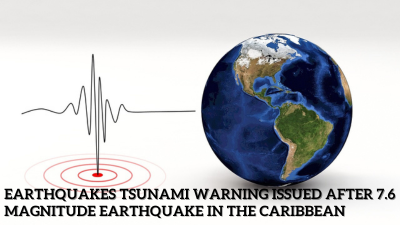NASA is closely monitoring an asteroid known as 2024 YR4, which has raised concerns over its potential collision with Earth in 2032. This asteroid, measuring between 130 and 300 feet in diameter, currently has a 2.3% chance of impacting our planet, a probability that has increased slightly since its initial detection. However, astronomers stress that while the odds are higher than usual, they remain extremely low, and further observations could likely rule out any real threat.
While still an extremely low possibility, asteroid 2024 YR4's impact probability with Earth has increased from about 1% to a 2.3% chance on Dec. 22, 2032. As we observe the asteroid more, the impact probability will become better known. More: https://t.co/VWiASTMBDi pic.twitter.com/Z1mpb4UPaC
— NASA Asteroid Watch (@AsteroidWatch) February 7, 2025
What Is Asteroid 2024 YR4?
Asteroid 2024 YR4, discovered on December 27, 2024, by the Asteroid Terrestrial-impact Last Alert System (ATLAS) in Chile, has captured the attention of space agencies around the world due to its high potential for collision with Earth.
While the chances of impact are still quite small, they have increased from an initial 1.2% to 2.3% in just a few weeks, a level not seen since the infamous Apophis asteroid of 2004, which was once thought to have a potential impact on Earth.
Despite its size—large enough to cause significant local damage if it were to strike—a direct collision with Earth would not lead to a global catastrophe.
The damage would be more contained, affecting a relatively small area, unlike the asteroid that caused the extinction of the dinosaurs 65 million years ago. Still, the possibility of impact is enough to keep astronomers vigilant.
How Is NASA Monitoring the Asteroid?
NASA, along with other international space agencies, has been continuously tracking the orbit of asteroid 2024 YR4 using ground-based telescopes.
These observatories, such as those operated by NASA’s Jet Propulsion Laboratory and the Catalina Sky Survey, use wide-field telescopes to scan the sky each night, searching for objects like YR4 that move against the starry background.
Once detected, the asteroid’s trajectory is plotted, and the data is analyzed to refine predictions. This process helps to determine the likelihood of an impact and provides a clearer picture of the object’s path over time.
As more data is gathered, astronomers can better predict whether the asteroid will hit Earth or not. In the case of 2024 YR4, the asteroid is still visible to ground-based telescopes, providing an opportunity for astronomers to refine their calculations.
However, after April 2025, it will be too faint to observe until it approaches Earth again in 2028.
Can NASA Prevent the Impact of an Asteroid?
While the current risk of asteroid 2024 YR4 hitting Earth remains low, it’s worth noting that NASA has developed strategies for planetary defense.
The space agency’s successful Double Asteroid Redirection Test (DART) mission in 2022 demonstrated that it’s possible to change the trajectory of an asteroid through a kinetic impactor.
While YR4 is not yet considered a threat, this technology could be employed if future observations indicate that a space rock is on a collision course with Earth.
The ability to deflect or redirect a dangerous asteroid is a crucial part of NASA’s ongoing efforts to protect the planet from potential impacts.
This involves both ongoing asteroid tracking missions and the development of innovative technologies to mitigate potential threats.
Will the Odds of Impact Decrease?
As more observations of 2024 YR4 are made, astronomers expect the probability of impact to fluctuate before eventually decreasing to zero.
This is a common occurrence in asteroid tracking, where initial projections can change as more data is collected. For instance, the asteroid Apophis, once thought to have a significant chance of colliding with Earth, was later ruled out as a threat after further analysis.
NASA’s Sentry Impact Risk Table, which tracks potential asteroid impacts, currently lists 2024 YR4 as a relatively low-risk object.
However, the asteroid’s rating on the Torino Impact Hazard Scale stands at 3, which is the second-highest level. This means that while the object presents a potential risk, the chances of a catastrophic collision remain slim.
What Would Happen if Asteroid 2024 YR4 Hit Earth?
If 2024 YR4 were to impact Earth, the consequences would depend on the location and size of the impact. With an estimated size between 130 feet and 300 feet, the asteroid could cause significant local damage, such as the destruction of buildings and infrastructure.
The asteroid would likely strike at a high velocity—around 38,000 mph—resulting in a powerful explosion upon impact.
However, unlike larger asteroids capable of global devastation, such as the one that wiped out the dinosaurs, 2024 YR4 would likely cause localized destruction rather than pose a threat to humanity as a whole.
The asteroid would need to be much larger to have the potential for widespread devastation, like the asteroid that created the Chicxulub crater.
What’s Next for NASA’s Asteroid Tracking?
NASA and its partners are committed to monitoring all near-Earth objects, including 2024 YR4, to protect our planet from potential threats.
The James Webb Space Telescope is set to observe the asteroid in March 2025 to obtain more precise data about its size, composition, and trajectory. This will help scientists refine their predictions about the asteroid’s path and whether it poses any real danger.
In the years ahead, space agencies plan to continue monitoring the object as it comes back into view in 2028. They will use this data to further reduce the uncertainty surrounding its orbit and the possibility of impact.
Also Read: Captain America Brave New World Review – Marvel’s Latest Chapter Struggles with Legacy


